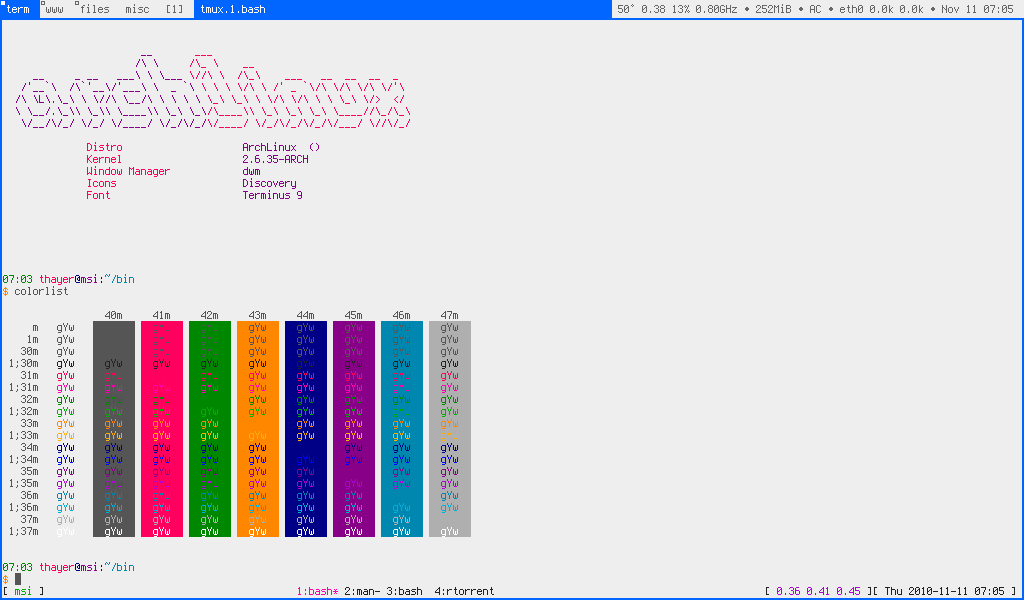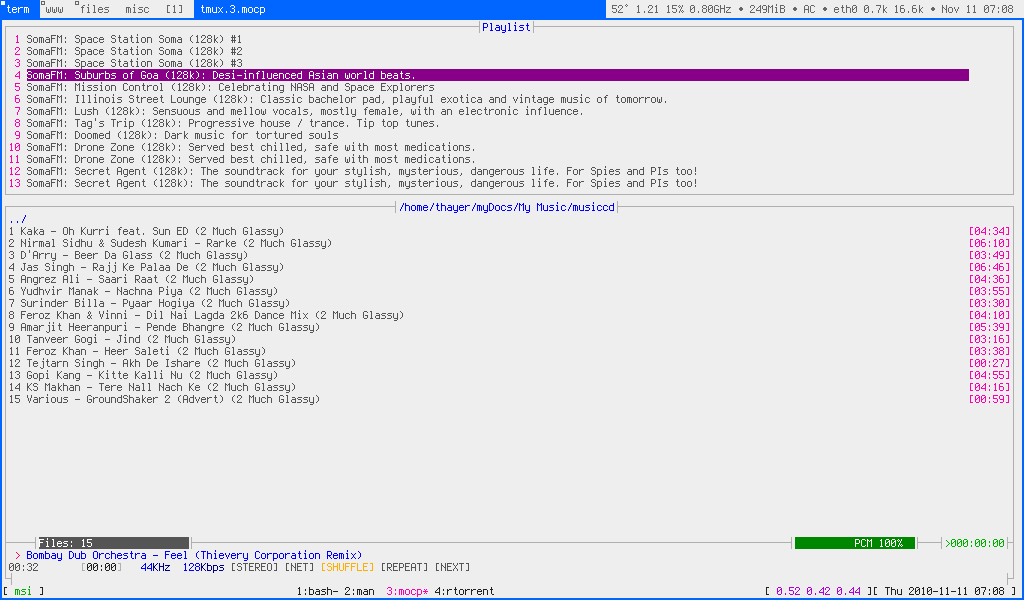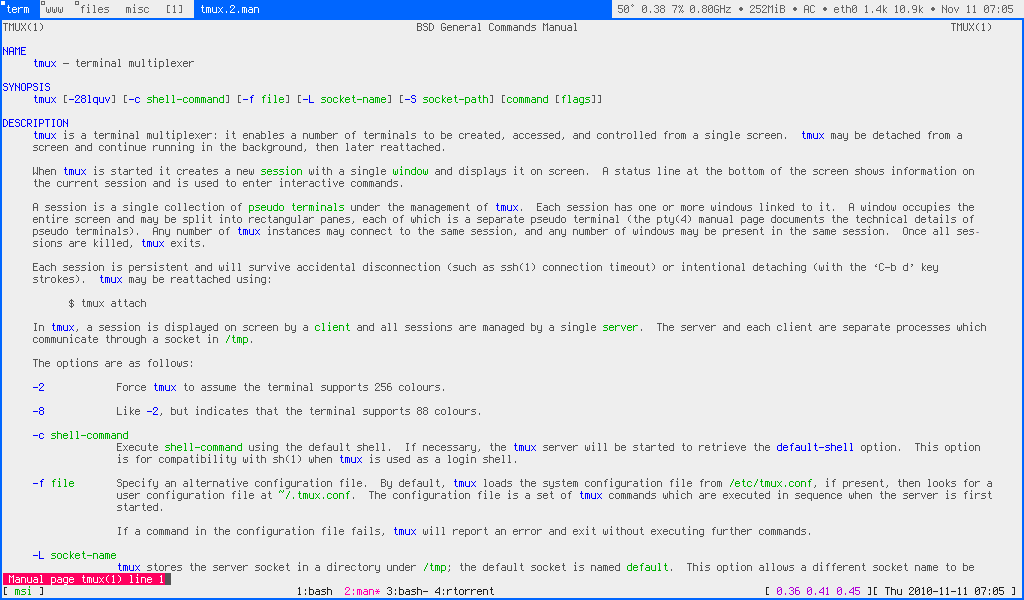I had an Aspire One D270 laptop with a 32-bit Intel Atom CPU and 1 gigabyte of RAM, so I installed Debian with Xfce on it, but even then it’s running way too slow.
Is there anything I can do to make the laptop faster and more responsive given its limited memory?
Compile your own kernel for those atom processors and they work much better.
It’s not hard, there’s a text interface for it where you just pick what to do from a list.
That will only speed it up slightly at best and at worse it will be slower
I’ve never compiled my kernel so I’m not familiar with what is happening there, but why could that be faster? Is it only installing drivers for present devices, or what is happening?
I can’t remember off the top of my head because it’s been a long while, but there’s some weird option inside the configurator that accounts for one of the things the early atom line doesn’t have that the default kernel expects out of x86 or x64 processors.
Of course, any binary program that was compiled with the expectation of that capacity would also have weird hangs and slowness, but (like I said, a while ago) that didn’t tend to cause a 1.3ghz atom to be slower than a 700mhz pentium m.
could always give antix linux a shot
@maliciousonion personally I’d go with Debian + IceWM on that. Works pretty well.
JWM is my suggestion. It’s a window manager that doesn’t require almost any knowledge or key bindings to use and it has all necessary stuff included out of the box afaik. You can also use xdgmenumaker to make the right click/Start menu better.
Try puppy linux ?
It’s a bit on the complicated side but still a good distro.
Maybe try Openbox instead of XFCE. Can’t promise it’ll add much memory but with 1gb RAM I guess every bit counts?
Edit: just had a quick look around, and it looks like your machine can be upgraded to a whopping 2gb RAM… It’s still not great, but it is a 100% increase in memory.
2 gb memory should make XFCE usable. That’s what my crappy laptop has and XFCE works fine. I use Firefox with a few open tabs and watch YouTube at 720p.
I once swapped a Debian install with XFCE to just running Openbox instead of a full DE and got down to 300Mb or so of memory usage. This was about a decade ago so obviously YMMV but given literally all I did was run Debian with just openbox and no DE, there’s probably additional tuning to be done that can get them to a more usable state
If you use mechanical hard drive in it, it worth a try to replace it with an SSD. After that, Debian should run much better.
Time flies, where a HDD is barely enough to run a minimal Linux.
I acquired an ewaste laptop with an 8 year old celeron, 4GB of memory and a 500GB HDD. I tossed Linux Mint on there as an experiment to see what would work decently on there. Its not great, but its usable and might become my daughter’s first computer. Running firefox its noticably slow but I can crack open Libre Office or ScummVM and other than the initial load time it’s pretty snappy. I kinda forgot how hard drives give systems that slow-then-fast feeling…
Hopefully it got standard SATA connector.
without any checking of course, I assumed that machine is “new enough” to have some form of SATA in it, but good point
You can buy IDE m.2 converter. There are usb to floppy converters, usb drive shows up as floppy drive. You can attach modern peripherals to old computers, this kind of retro world with modern and old parts mixed is funny.
Would it worth, though? I mean, is there a significant difference on IDE between HDD or SSD? With an adapter, SATA speeds on the long run would be bottlenecked by IDE if I’m correct.
Yeah, it’s not quick, there is no noticeable difference in speed. Random read should be much quicker. But you can’t really buy ide hdds anymore and they will die sooner or later, and the price of small m.2 sata ssds are falling.
Still worth it, for the latency elimination alone. But also I expect a SSD would saturate the IDE connection whereas a HDD rarely would.
I can speak from experience that it is worth it. It won’t be a super speed demon, but it will make it somewhat more usable. I’ve done so with my Asus Eee PC 901 netbook which has the two PATA SSDs. Those SSDs are SUPER slow compared to the cheapest mSATA SSD you can find with more than double the space, and all you need is a MiniPCI-to-mSATA adapter (the Eee PC 901’s drive slots are MiniPCI). I documented all about it here: https://claudiomiranda.wordpress.com/2020/10/04/my-geeeky-experiment-part-3/
I’m running OpenBSD/i386 on mine which isn’t as fast as something like Linux, but it definitely felt faster even with OpenBSD after the hardware upgrade. I also increased the RAM to 2 GB which is the maximum amount supported.
Zram
I have a similar device Intel atom, 1gb RAM. I installed arch and use it as a headless computer (without DE/WM). If I need WM I use sway. Use a minimal browser like Qutebrowser. Although it would also run like shit but better than chrome/firefox.
If that’s one of those old 10" netbooks, I had good experiences running dwm and xmonad on mine back in the day (had an Acer and later an MSI Wind U120(?)). Typically ran all my apps maximized, one per desktop. Firefox did okay, but this was around 2010-2012. Mostly stuck with terminal apps and it was more than snappy enough.
Some screenshots for reference…




Ohhh, the MSI Wind. One of my favorite devices, so much value for money. Loved it
Me too! I can’t recall now why I parted with it, but I wish I hadn’t. Would love to see what it could do today.
Someone suggested antix. I second that. Try it. They got 32 bit version.
I have a similar but dual core Atom netbook. The thing I did was put an SSD into it, and then installing bare Debian. I chose no graphical system from the installer. From there I installed i3 as the window manager and launched it with an automatic login script checking if I was on TTY1.
That’s all I did, basically keeping the stuff the little thing has to run to an absolute minimum, and a fully fledged desktop environment would have set it on fire.
I have something like that running Haiku. Try it, you’ll be surprised.
Try antix. its requirements are 256mb ram. And it’s actually usable.
You can try something like antiX but it won’t do good as a desktop. I use my netbook as a home server with pi-hole in it.













